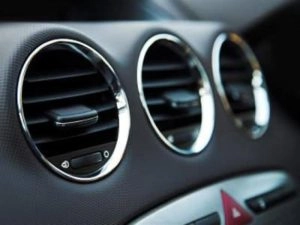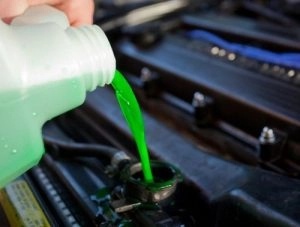The air conditioning radiator is a crucial part of the car's cooling system. It works to dissipate engine heat and convert hot gases to cold liquid. To keep your air conditioning radiator in good condition, you should exercise caution and repair any problems as quickly as possible.
From here, we will discuss 5 signs indicating damage to the car's air conditioner radiator, which should be paid attention to.
Signs of Air Conditioner Radiator Damage

Water leakage
Water leakage is one of the signs indicating damage to the car's air conditioning radiator, where water leakage occurs from the radiator's hoses or nozzles. This leakage leads to There is a deficiency in the amount of water inside the radiator., which affects the radiator's ability to properly cool the engine, increasing the risk of engine damage.
When a water leak occurs, water can leak from any point in the cooling lines, whether it is in the hoses or nozzles or the connection point between the radiator and the engine. A water leak can result in water flowing onto the ground, and traces of the leaked water may be visible under the car.
2- Rust
Rust is another sign indicating damage to the car's air conditioning radiator. It is a sound that emits from the radiator after the engine is started, and this sound may be accompanied by an increase in the engine temperature.
Rust may occur as a result of sediment build-up inside the radiator, leading to major rusting and damage to the radiator. Rust can also occur as a result of damage to parts of the radiator, such as hoses or valves.
When you notice rust in the radiator, you need to identify the cause of the sound and take necessary actions to fix the problem. Certain radiator-specific cleaning agents can be used to remove deposits and rust, improving the radiator's cooling efficiency.
3- Change the color of the fluid

A change in the color of the fluid in the car's cooling system is an additional sign of damage to the air conditioner's radiator, and may point to a problem in the cooling system. The fluid color can change to a dark brown or black, indicating the accumulation of dirt and impurities within the system.
The color of the fluid may change due to several factors, such as significant radiator damage, damage to the hoses connected to the cooling system, or fluid leakage in any other parts of the cooling system.
When a change in the fluid color occurs, the radiator's condition and the general cooling system should be checked, and necessary repairs should be made. It may require changing the entire radiator, repairing damaged hoses, or cleaning the system after draining the old fluid and replacing it with a new one.
Attention must be paid to the change in the color of the fluid and necessary measures must be taken as quickly as possible. Damage to the cooling system can lead to an increase in engine temperature and its complete breakdown, which can cause major damages and expensive repair costs.
4- Increased fuel consumption
An increase in fuel consumption is a common symptom that indicates a problem with the air conditioner radiator. Radiator damage leads to the cooling system's inability to effectively control the engine temperature, which results in increased fuel consumption.
Increasing fuel consumption affects the performance and economy of the car, where there is an increase in the feeling of power and a decrease in performance, in addition to the additional fuel costs that the owner must pay.
The radiator and cooling system should be checked regularly, and necessary maintenance should be carried out to avoid radiator damage, thereby reducing fuel consumption. Attention should also be paid to any changes in fuel consumption and necessary measures should be taken as soon as possible.
5- Engine Overheating
An increase in engine temperature is a common symptom indicating a problem with the air conditioner radiator, as the radiator controls the engine temperature by cooling the fluid inside it.
When damage occurs to the radiator or it suffers a malfunction, the cooling system can no longer effectively control the engine temperature, which can lead to an increase in the engine heat and the potential for it to sustain damage and deterioration.
An increase in engine temperature can cause several problems such as damage to the water-transfer pipes and cracks in the cylinder head. It can also potentially lead to complete engine damage if ignored.
It is also important to pay attention to any increase in engine temperature and take the necessary action as soon as possible to prevent any damage or harm to the engine.
Periodic maintenance of the cooling system and radiator should be carried out regularly, and the coolant should be replaced when needed. Any leaks in the radiator or pipes should be checked and repaired immediately.
6- Refrigerant gas leak
A Freon gas leak is a common symptom indicating damage to the air conditioner's radiator. The air conditioning's cooling system relies on Freon gas to cool the car's internal air.
When a leak occurs in the radiator, the freon gas escapes from the system, impacting the efficiency of the air conditioner's cooling. Also, freon leakage is harmful to the environment and should be handled with care.
A refrigerant gas leak can occur due to several reasons, such as damage to the radiator or the pipes that carry the refrigerant, or through the installation of unsuitable parts or the use of non-original spare parts.
To avoid the leakage of Freon gas, it is necessary to perform regular maintenance on the cooling system.Air conditioning radiatorReplace filters and necessary fluids on time. Also, care must be taken to install original and suitable spare parts for the type of air conditioner, and to ensure that they are functioning properly.

Comments